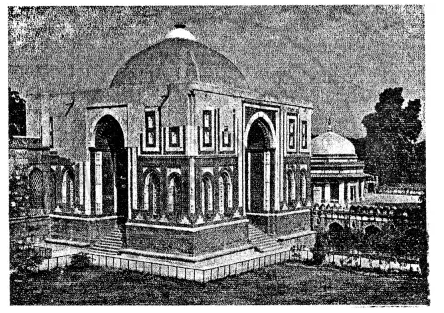Advertisements
Advertisements
Question
Choose the correct answer:
The ________ were the chief advisors to the sultans.
Options
Brahmanas
ulema
merchants
Solution
The ulema were the chief advisors to the sultans.
RELATED QUESTIONS
What evidence do we have to prove that Alauddin was a patron of art and learning?
This is a picture of the most beautiful specimen of Khilji architecture, which was added as an entrance to the Qutb complex in Delhi.

With reference to the reign of this ruler, mention two important features the Reorganization of the army
State whether the following statement is True or False:
The Sufi saints believed in one God.
Answer the following question briefly:
Describe the important developments which took place in the following fields during the Sultanate period:
Dance
Answer the following question in one or two words/ sentences:
During whose reign did the life and conditions of the peasants improve?
Answer the following question in one or two words/sentences:
Which style of painting was patronized by the Lodi sultans?
Answer the following question briefly:
Explain how new customs and practices changed the traditional lifestyle of the Indians.
This is a picture of a musical instrument used in Hindustani classical music. The name is derived from the Persian words—‘seh’ (meaning ‘three’) and tar’ (meaning ‘strings’).

Identify the musical instrument.
This is a picture of a musical instrument used in Hindustani classical music. The name is derived from the Persian words—‘seh’ (meaning ‘three’) and tar’ (meaning ‘strings’).

During which period in medieval Indian history was this instrument invented?
This is a picture of a musical instrument used in Hindustani classical music. The name is derived from the Persian words—‘seh’ (meaning ‘three’) and tar’ (meaning ‘strings’).

By whom and how was it invented?
